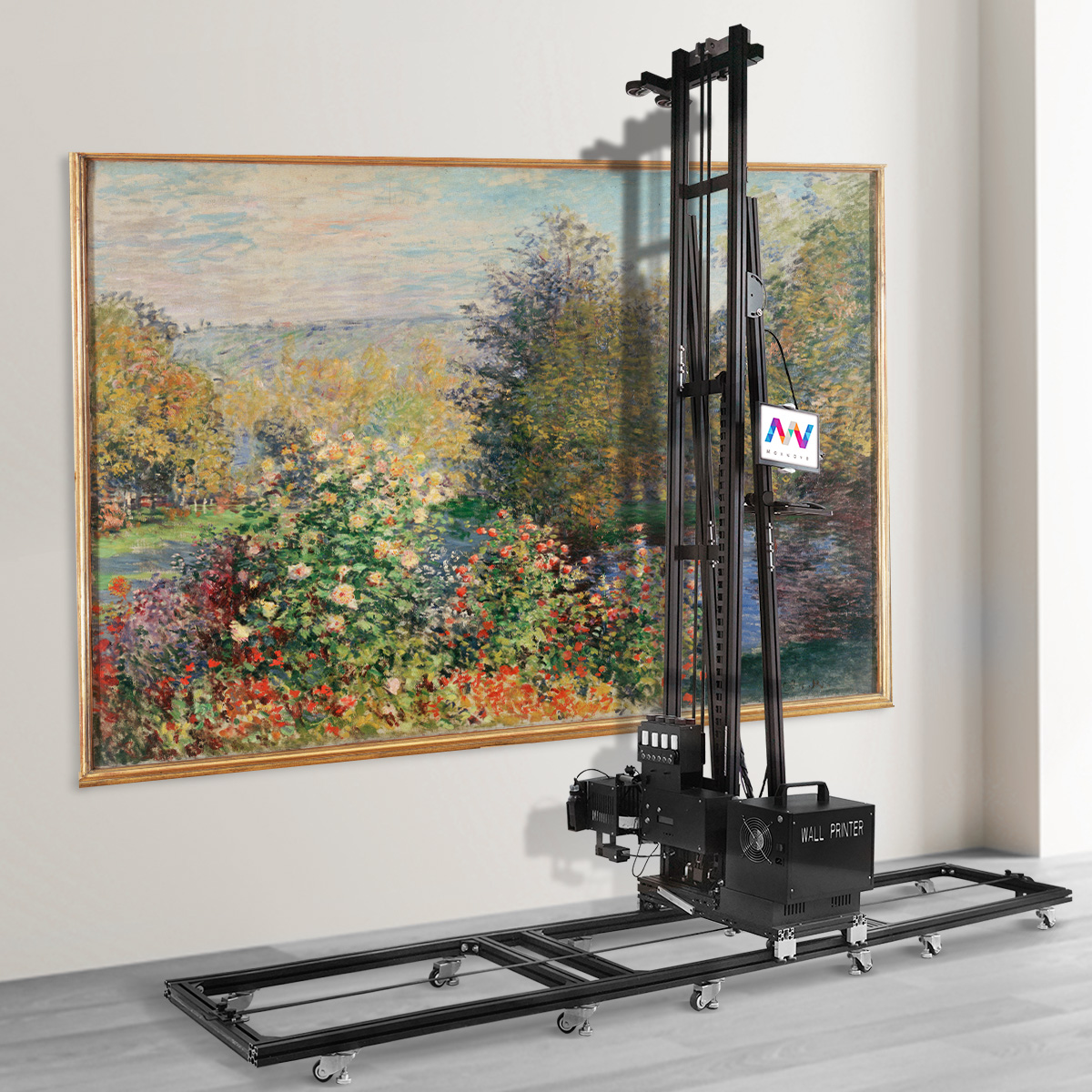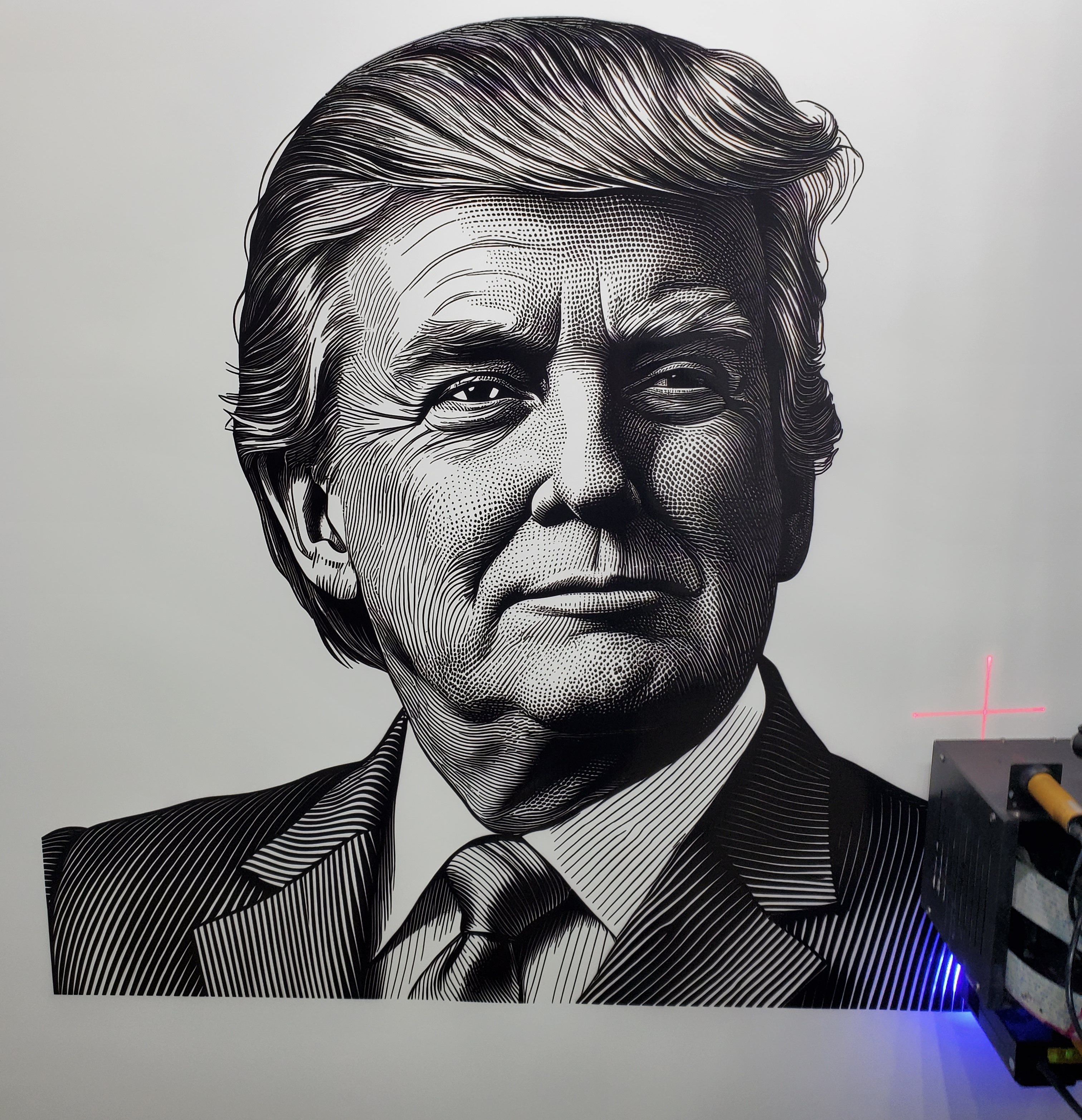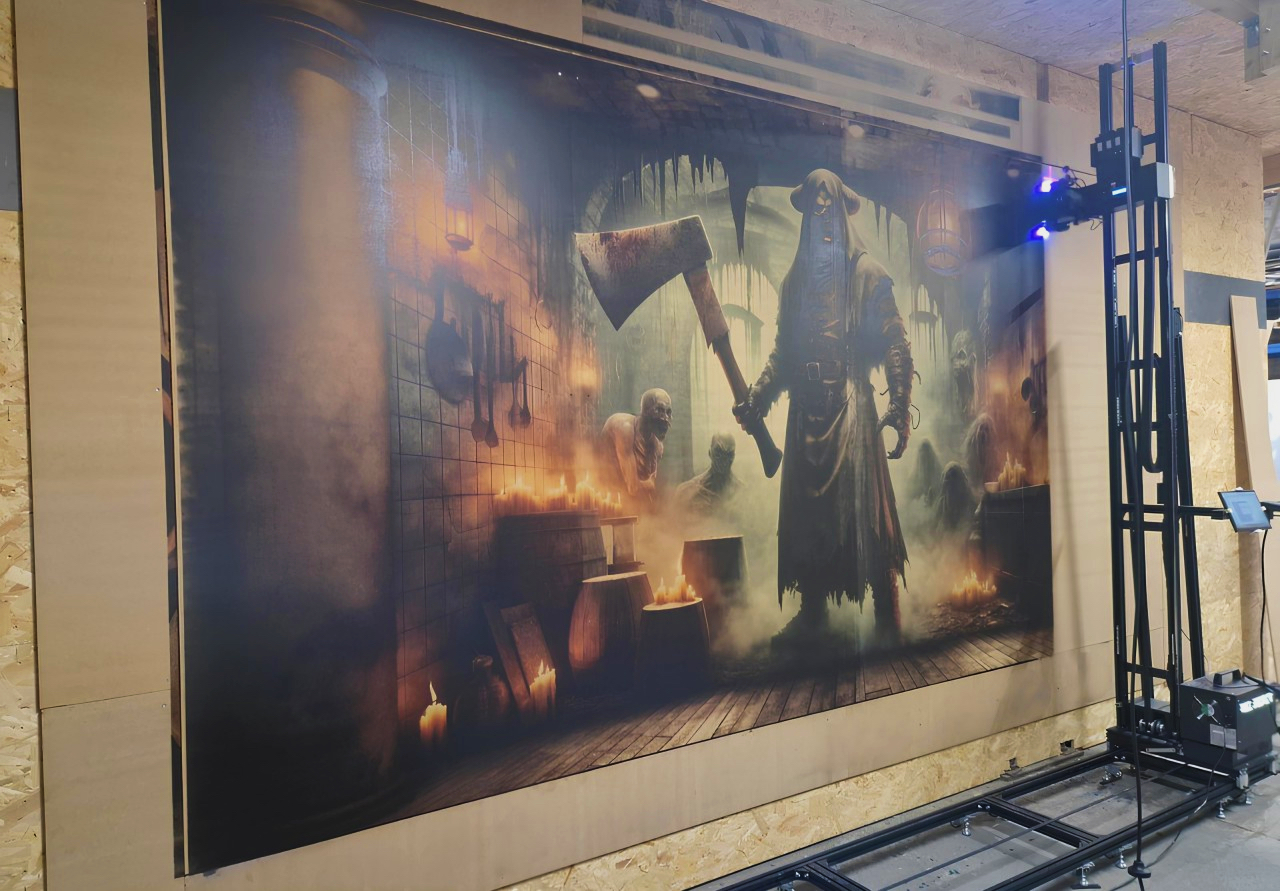Have you ever walked past a massive, colorful wall mural and wondered how it was printed so perfectly? Vertical wall printers are the secret behind these eye-catching designs. From simple home décor to large-scale commercial projects, these machines are transforming how we bring art and branding to walls. But one big question every entrepreneur and business owner asks is: How much does a vertical wall printer cost?
Main Price Range Overview of Vertical Wall Printer
The price of a vertical wall printer varies a lot. From my experience, things like the brand, technical features, and the size of the machine change the final cost. Prices start around $3,000 for a simple, basic machine. They can go up to $60,000 or more for top-tier and industrial models.
Quick Reference Table: Vertical Wall Printer Prices
| Category | Price Range | Typical Models | Main Features | Who Should Consider | Expert Note |
|---|---|---|---|---|---|
| Entry-Level Wall Printers | $3,000 – $6,500 | HJZ Wall Printer: $4,000–$5,000
Tanyu TPP1000 Basic Model: $4,200–$7,500 Perfect Laser Entry Model: from $4,500 |
Single print head for basic projects
Water-based inks; some with UV option Standard hardware/software, ready to use Minimal automation, more manual setup |
Best for beginners or businesses with tight budgets, especially for small indoor mural projects |
Entry-level models balance price and function; affordable, but limited upgrade options—suitable for light workloads. |
| Mid-Range Wall Printers | $6,000 – $14,000 | Maxwave: $4,500
HKHR Wall Printer: $7,000–$12,000 TWF1000 Industrial Wall & Floor Printer: $7,800–$11,000 |
Aluminum alloy, durable and portable
Prints on walls and floors, faster with better colors Upgraded hardware/software for higher precision |
Smart choice for small to medium businesses wanting professional murals and reliable performance. | More robust and dependable than entry-level; best value for most growing mural businesses. |
| High-End Wall Printers | $35,000 – $60,000+ | TWP Wall Printer (USA): $35,000–$60,000
WallPen (Germany): $50,000–$60,000 |
Industrial print heads for top quality
Pro RIP software with advanced color control Sturdy frame, precise rails, auto-calibration Prints on glass, metal, textured walls, tiles with UV inks |
Best for large mural companies or pros who need nonstop, consistent output. | Costly, but deliver premium features and support—pay off with higher speed, lower failure, and outstanding print quality. |
Vertical Wall Printer Price Factor: Printhead Type
From my experience, the printhead’s brand and type are a big part of a vertical wall printer‘s cost. Industrial-grade printheads from famous brands like Ricoh and Epson will increase the machine’s price a lot.
How Printhead Choice Impacts Cost
Premium Printheads (Ricoh, Epson): Vertical wall printers with these industrial heads will cost you more. I believe the higher price is justified. You are paying for a tougher machine, better print quality, and a printhead that lasts longer. These printers are in the mid-to-high price bracket. I’ve seen them sell for more than $10,000, and some go for over $40,000.
Generic or Entry-Level Printheads: In my opinion, cheaper printers use less expensive, non-brand printheads to keep costs down. This really lowers the price. You can find these printers for between $2,000 and $6,000. You might get lower performance or need to do more maintenance with these models.
My recommendation is this: if you need top print quality, reliability, and a long life for your business jobs, I suggest investing in a vertical wall printer with a printhead from a top brand. If you are new to this or on a tight budget, a basic printhead is probably the smarter financial choice for you.
Vertical Wall Printer Price Factor: Number of Printheads
From my experience, the number of printheads in a vertical wall printer is a major factor in its price. Printers with more printheads cost much more than single-head ones. This is because extra printheads allow for faster printing and higher resolution. They also let you print wider images or use more colors in a single pass.
Impact of Multiple Printheads on Wall Printer Cost
Single-Printhead Models: Most entry-level and mid-range vertical wall printers have one printhead. These are the more affordable choice, and I usually see them priced between $2,000–$12,000. The final cost depends on factors like the brand and the total print area. I find they work great for standard wall art or basic commercial projects. You should pick this type if high speed or rich color detail is not your main goal.
Dual or Multi-Printhead Models: I recommend a vertical wall printer with two or more printheads for large commercial jobs. They are also ideal for any business that needs to be more efficient. These models greatly increase your output speed. They also allow for more color channels and special effects. In my experience, a printer with two or three printheads can cost 30%–50% more than a similar single-head unit. For example, an $8,000 wall printer with one printhead might cost $12,000–$16,000 with two or three. Industrial models with many printheads can reach $20,000–$60,000+, and the price goes up when they include top-brand printhead technology.
My Evaluation
My suggestion is simple. If your business handles a high volume of printing, a multi-printhead printer is a wise investment. This choice will also help you get a faster return on your money. I believe the extra cost pays for itself with faster, more professional results. It also gives you the flexibility to handle bigger or more detailed mural projects. But if you are just starting out or work on smaller jobs, a single-printhead model should be enough. It saves you a lot of money upfront.
Vertical Wall Printer Price Factor: How Ink Type (UV vs. Water-Based) Affects Cost
From my experience, the ink type makes a big difference in a vertical wall printer’s price. You have two main choices: UV ink or water-based ink. UV ink printers cost more. This is because their technology is more advanced and they can print on more types of surfaces.
Price Comparison: UV Ink vs. Water-Based Ink Wall Printers
Water-Based Ink Models: I find that starter models with water-based ink cost between $3,000–$6,500. Because the starting cost is low, I think they are a great choice for beginners or small businesses. Mid-range models cost about $7,000. The larger, high-end printers can run up to $12,000.
UV Ink Models: Printers using UV-cured ink have a higher starting price. I’ve seen the most basic UV models cost around $6,500–$8,000. Mid-range options are priced from $11,000–$15,000. The most advanced models can cost $40,000 or even more.
Why I Think UV Printers Cost More
- Advanced Drying System: UV vertical wall printers use special lights to dry the ink the moment it’s printed. This lets you print on all sorts of surfaces. I’ve used them on glass, metal, wood, tile, and even textured walls. This advanced system is a big part of the higher cost.
- You Can Do More Jobs: I feel a UV vertical printer is the better choice if you want to work on many different projects. Spending a bit more upfront can lead to better prints. It also lets you take on more types of jobs.
- Higher Starting Cost, Better Long-Term Payoff: The price to get started is higher. But I’ve seen many professionals agree that what the printer can do makes it worth the cost over time.
My Recommendation
If most of your work is indoor murals on smooth walls, I suggest a water-based ink vertical wall printer. It is a more affordable choice. If you want to grow your business and need a vertical wall printer that can do more, I recommend a UV ink model. In my opinion, it opens up new opportunities and makes the higher starting price worth it.
Vertical Wall Printer Price Factor: Hardware Quality and Core Components
Hardware quality has a direct impact on the price of vertical wall printer machines. In my experience, machines equipped with high-end printheads such as the Epson I3200 are always priced higher. The Epson I3200 is a market leader, featuring fast drop ejection (high-speed ink drop firing), excellent precision, and consistently sharp output—making it the preferred choice for advanced models. This premium hardware increases the cost of the machine, often adding several thousand dollars to the final price.
For example, the MaxWave MW-GP200 uses the Epson I3200 printhead. It delivers excellent performance and reliability while being highly cost-effective, with prices starting at just $4,680—a great value compared to other models in its class.
Number of Printheads and Price Impact
-
Multiple printheads: Adding a second or third printhead increases printing speed and allows for larger coverage, which is highly beneficial for businesses handling large projects.
-
Cost differences: Each additional printhead typically adds several hundred to several thousand dollars, depending on the brand and technology. That’s why two similar printers may have significantly different prices if one has more printheads.
Why Hardware Quality Matters
From my experience, investing in a vertical wall printer with premium components is worth it. A high-quality printhead such as the Epson I1600 ensures cleaner, sharper output and excellent color fidelity, making the machine more reliable and capable of handling heavy workloads.
If you’re working on large commercial projects or need professional-grade results, paying extra for superior hardware is a smart investment. But if your projects are simple and low volume, choosing a basic model can help you save on costs.
Vertical Wall Printer Price Factor: Printer Software and Control System
Software and control systems play a big role in wall printer pricing. Licensed advanced software is more expensive because it offers better color management, smoother workflows, and RIP support. MaxWave stands out by using advanced all-in-one software—printing can be completed with just one program, saving time and cost.
Advanced Color Management: Printers with strong color calibration deliver more accurate results. This software alone can add thousands of dollars compared to basic models.
RIP Integration: Printers with licensed RIP software like Wasatch, Caldera, or ONYX cost more but offer greater control and efficiency—essential for commercial projects.
Workflow and User Interface: User-friendly software reduces training time and errors. Though it raises costs, it’s worth it for reliable operation. MaxWave vertical wall printer’s one-stop software makes the workflow even simpler.
My Evaluation
For complex, professional work, advanced software is the best choice. MaxWave’s all-in-one solution lowers complexity while ensuring consistent, high-quality results. If you’re budget-conscious with simple projects, entry-level models can still get the job done.
Vertical Wall Printer Price Factor: Accessory and Feature Set
The accessories and features you choose greatly affect the price of a vertical wall printing machine. I’ve seen upgraded features add thousands to the price, even when two printers have the same core printing unit. I want to show you some key upgrades to look for when comparing models and their prices.
Essential Accessories and Their Cost Impact
Rails and Wall Sensors: Smart rails and sensors improve accuracy, prevent errors, and save materials. They add $1,000–$2,500 to a base printer price of about $4,000.
Height Extension Kits: For tall murals, extension kits cost $800–$2,000. Essential if you plan to work on large walls.
Computer and Touchscreen Panels: Built-in touchscreen control adds $800–$1,500, making operation easier than using laptops or basic panels.
Automatic Cleaning Systems: Automatic cleaning saves hours of work, extends printer life, and ensures sharp prints. Adds $500–$1,000.
Mobility and Foldable Frames: Foldable, portable frames add $600–$1,800, giving flexibility for different job sites.
Feature Set: Professional Add-ons that Raise Price
Advanced Connectivity (Wi-Fi, USB, LAN): Good connection options make it simple to transfer files and manage jobs remotely. A printer with Wi-Fi or a network port will cost $400–$1,000 more. From my perspective, this is a great feature for any busy studio.
Laser Positioning and Auto-Calibration: To place images perfectly, I recommend printers with built-in laser guides and auto-calibration. These advanced models start around $8,500. In contrast, printers without these features can cost less than $6,000.
Environmental Protections (Dust Covers, Filters): You can also get features like dust-proof covers and air filters. These will add another $200–$700 to your cost. In my experience, these are incredibly useful for protecting the printer. They help my equipment last longer on dusty job sites.
My Evaluation: Choosing Accessories vs. Base Cost
The right accessories depend on your projects. A basic model works for simple or occasional murals, but investing in smart sensors, mobility, and cleaning systems is worthwhile. These upgrades improve workflow, keep the printer reliable, and enhance print quality—making them a smart choice for efficiency and professional results.
Vertical Wall Printer Price Factor: Warranty and Technical Support
Warranty and tech support are huge factors in a 3D vertical wall printer‘s price. They directly affect what you’ll pay. In my experience, top brands offer longer warranties and better service. This is a big reason why they cost more.
How Warranty Duration Affects Wall Printer Price
Wall printer warranties range from 12 months on budget models up to 36 months for high-end ones. You’ll find these longer warranties with premium models from top German or US makers. Cheaper printers from smaller suppliers in China or Turkey often just give you a one-year warranty.
- 12-Month Warranty: This is standard for entry and mid-range printers. It covers basic hardware but offers limited support for software or parts that wear out.
- 36-Month Warranty: I see this on premium models. They cost more upfront. I think it’s a smart choice if you plan to use the printer a lot or for business.
Technical Support: What to Expect
The level of tech support you get can really make a difference with your purchase:
Full Tech Support: Premium brands give you a lot. This includes 24/7 online help, setup guides, troubleshooting, and software updates. They even offer on-site repairs. This service is part of the higher price.
Basic Support: Cheaper models come with less. You might get remote help, some training, or just email support. I find you often have to buy spare parts or service plans on your own.
Price Examples Linked to Warranty & Support
- High-End (Wallpen, TWP):
These come with up to a 36-month warranty and great tech support. This is why prices start at $39,995 and can go up to $65,000. - Mid-Range (Tanyu, Maxwave, DXonJet):
These brands offer 12–24 month warranties. Support is a mix of remote and on-site help. Prices range from $4,200–$17,000. - Budget and Unbranded Printers:
The warranty can be as short as 6–12 months. It often just covers hardware repairs and basic online help. These are the cheapest printers, from $2,000–$6,000. Be ready to fix more problems on your own.
My Evaluation: Choosing for Your Needs
If your business relies on the printer, choose a longer warranty and solid tech support. It costs more upfront but prevents downtime and repair expenses. For personal use or tight budgets, a basic warranty may suffice, though it means more hands-on maintenance. Always consider service and warranty value when comparing wall printer prices.
Summary
Price isn’t just about the lowest number—it’s about the value you get from hardware, software, and long-term reliability. A quality wall printer can quickly pay for itself through new opportunities and higher profits. If you’re ready to turn blank walls into works of art and build a business that stands out, now is the time to invest in the right machine. Don’t just wonder about the price—contact us today for a personalized quote and start your wall printing journey.





